This is a guest article contributed by Ismail Khalid.
Australia is privileged to have some of the most wonderful and weirdest animal species on earth, residing in wild and untouched conditions, each with an incredible story of its own.
For centuries, explorers and naturalists have not only been left perplexed but fascinated as well, by the variety of critters and creatures that can be found only here and no other nook and cranny of the world.
Due to millions of years of geographical isolation, most of Australia’s wildlife has remained endemic and unique. In fact, over 80% of the species are found only in this part of the world. While some of these intriguing creatures can be viewed in captivity, there is nothing like watching them roaming freely in their natural habitat.
So regardless of your field of passion, this compact go-to guide, across all animal categories and iconic wildlife destinations, should certainly inspire you to start planning for your wildlife escapade to Australia.
Australian Mammals and Where to Spot Them
The mammals of Australia are endemic to this part of the world and 84% of them can be found nowhere else in the world. While the Dingo is the largest, others like the Tasmanian Devil are just the size of a small cat. Some of the important ones are featured here.
The Dingo
The best places to travel for spotting the Dingo:
- Fraser Island, Queensland
- Kimberly, Western, Australia
- Northern Territory
These legendary medium-sized wild dogs are Australia’s only canids and the largest terrestrial carnivores of the country. This opportunistic hunter mainly hunts small mammals and lizards. Fish form a large part of their diet on Fraser Island, while they have been known to bring down buffalo in the Northern Territory.
Embark on excellent guided Naturetrek wildlife holidays to ensure you have an unforgettable experience in the Australian bush. They cover all popular national parks and have amazing itineraries which will allow you to spot an array of endemic Australian mammals and birds.
Quolls
The best destinations to visit for spotting Quolls:
- Tasmania
- South East Australia
Quolls are carnivorous marsupials with bright eyes and pointed snouts with extremely sharp teeth for tearing meat and crushing bones. There are four species of Quolls found in Australia of which the larger ones feed on birds and reptiles, while the smaller type enjoys frogs and other small mammals. All Quolls are scavengers and feed on carrion.
Numbats
The best area to sight Numbats:
Currently classified as endangered, with less than a 1000 numbers left, the Numbat or banded anteaters, live in an extremely dry environment as they fulfil all their moisture requirements from the food they eat. This unusual marsupial lacks a pouch.
Tasmanian Devil
Best place to spot the Tasmanian devil:
The seething and snarling Tasmanian devil is among the most adored of all creatures in Australia. It is known for it’s lunatic and spine-chilling behaviour, especially when defending a meal. Sadly, this world’s largest carnivorous marsupial is now listed as endangered.
Kangaroos and Wallabies
The best places to spot them:
- Namadgi National Park
- Pebbly Beach, NSW
These marsupials belong to the macropod family where the hind legs are much larger than the forelimbs. Kangaroos and Wallabies have front opening pouches and although the above-mentioned places maybe some of the best places, they can be found all over the country.
Koala
Where to travel to Australia to See Koalas:
- Lone Pine Koala Sanctuary, Queensland
- Tidbinbilla Nature Reserve, Canberra
This iconic Australian tree-climbing animal with a pouch relies on the eucalyptus tree for food and habitat. Most of the time Koalas are asleep as they need to conserve maximum energy to digest the toxic food they eat.
Wombat
The best parks to spot Wombats are:
- Blue Mountains National Park, NSW
- Wilsons Promontory, Victoria
Wombats are short-legged marsupials, native only to Australia. These cute pudgy creatures walk with a wobble and have a pouch on the back which allows them to dig without harming the offspring. They have tough rumps and rodent-like sharp teeth.
Monotremes
Top parks to for Monotremes:
- Tidbinbilla Nature Reserve Canberra
- Lake Elizabeth Victoria
Platypus
Of all the egg-laying mammals, the bizarre-looking duck-billed Platypus is also the world’s only venomous mammal. Male Platypus have poisonous stingers on the rear feel, which can be used to deliver a lethal blow to any enemy.
Echidna
Best place to sight Echidnas:
- Raymond Island, East Gippsland, Victoria
November is the best time to see these quirky animals across East Gippsland as the cool nights and sunny weather makes for ideal conditions to view them during the day. Echidnas breed during spring, during which the female lays a single egg in a pouch in the abdomen for four weeks after mating.
Birds of Australia and Where to Spot Them
Penguins
Where to see Penguins in Australia:
- Kangaroo Island, South Australia
- Phillip Island, Victoria
The little Australian penguins are the smallest in the world, weighing approximately one kilogram. These adorable animals spend 80% of the time in the water, and the only time they come ashore is at night to rest in their nests.
Cassowaries
The best places to see Cassowaries:
- Cape York, North East Queensland
Of the three kinds of cassowaries found in the world, only the southern cassowary is found in Australia. A striking bird with black plumage and a helmet on the head which grows up to the height of a tall human.
Emus
The best place to see Emus:
- Throughout the country
Found all over Australia, these flightless birds can be recognised instantly because of their sheer size which can be up to 2 m in height. Emus have two eyelids, one for keeping the dirt out and the other for blinking.
Kookaburra
The best region to see Kookaburras:
- Eastern Australia
The laughing Kookaburra can be identified readily by its territorial cackle and colourful plumage. It is one of the largest members of the kingfisher family and is found mostly perched on trees from where it can easily pounce on prey.
Reptiles of Australia and Where To Spot Them
Salt Water Crocodiles
The best places for spotting Crocodiles:
- Kakadu National Park, Kimberly
- Cape York Peninsula
This enormous deadly predator is the world’s largest reptile and can weigh up to 500 kg. Well adapted to living in saline water, these crocodiles have been known to swim hundreds of kilometres in search of food.
Thorny Devil
The best area for spotting:
- Western Australia deserts
This small spiky lizard, native to Australia, lives in the arid desert areas of the continent. Their diet is only ants and they can consume thousands of them in a day. Their spiny armour not only detracts predators but also helps in absorbing moisture in the harsh habitat.
Marine Animals
The best place for marine animals:
- Great Barrier Reef
This extraordinary coral reef system, which can be even spotted from space, is a unique marine wonderland like nowhere else on the planet. Myriad species of rare marine animals like turtles, manta rays, dwarf minke whales, clownfish and Maori wrasse can be seen here. A very popular place for snorkelling and diving!
Wildflowers
The best places for wildflowers:
- Wave Rock, Hayden
- Noble Falls, Gidgeannup
Western Australia is home to nearly 12,000 species of dazzling wildflowers which bloom in June in the northern plains of Goldfields and Coral Coast and sweep over to the south-west coast by November. They colour the landscape from forest to outback in one of the largest floral displays on earth.
Sixty million years after it split from the supercontinent Gondwana, evolution has altered the Australian environment in more ways than one as compared to other regions on the planet. As such, the country’s biodiversity has turned out to be far richer than hotspots anywhere else in the world. Australia is the only continent that is home to three major groups of mammals namely, monotremes, marsupials and placentals. No matter where your priorities lie, whether they are feathers, petals, claws or scales, we hope we have them all covered for you by way of this handy guide. Put these spots on your bucket list for your next trip to Australia.

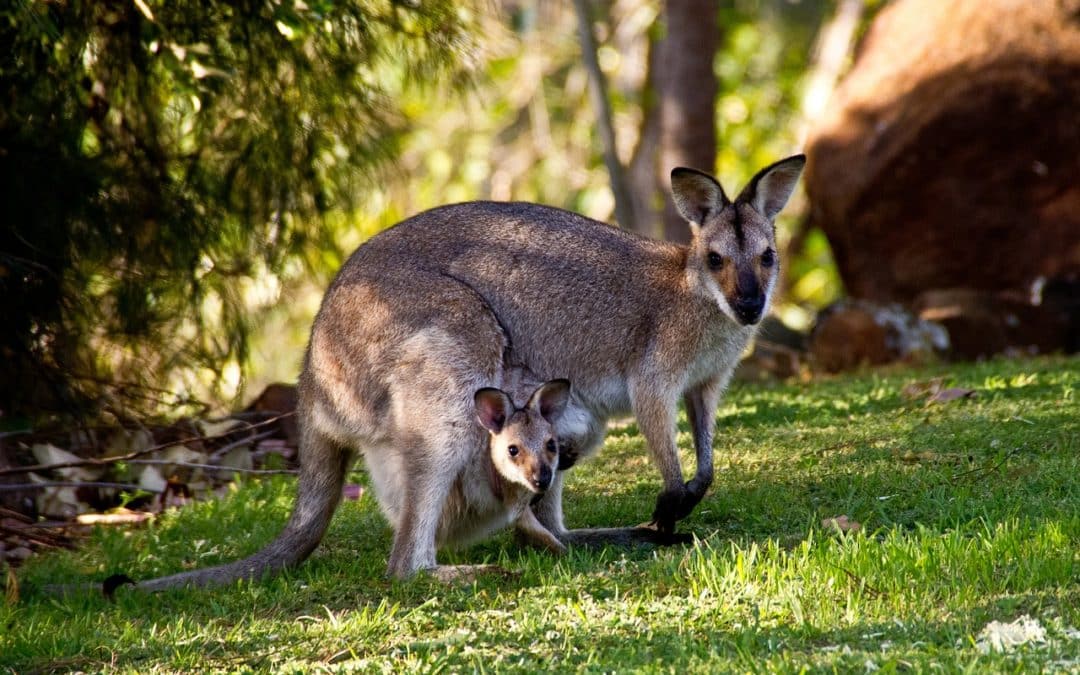
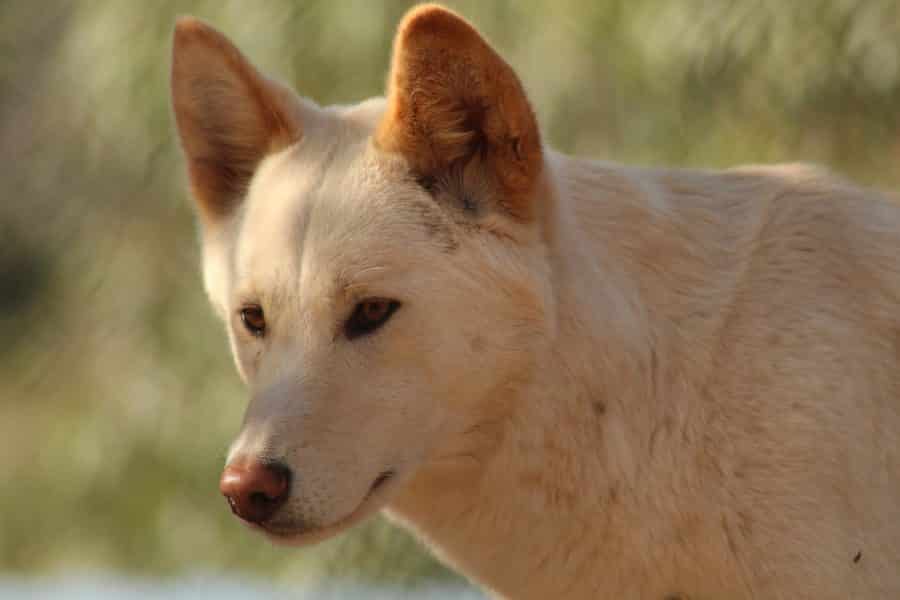
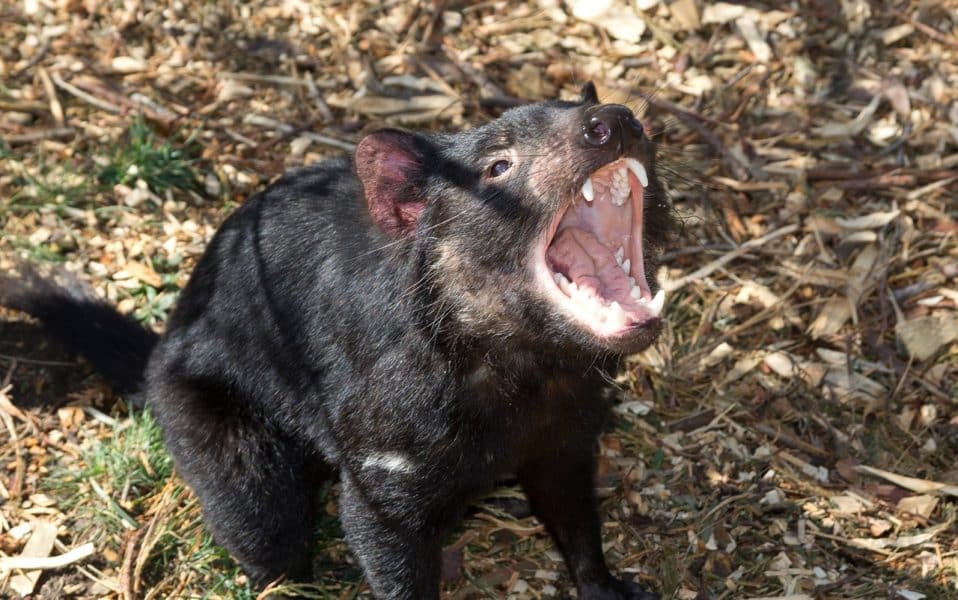
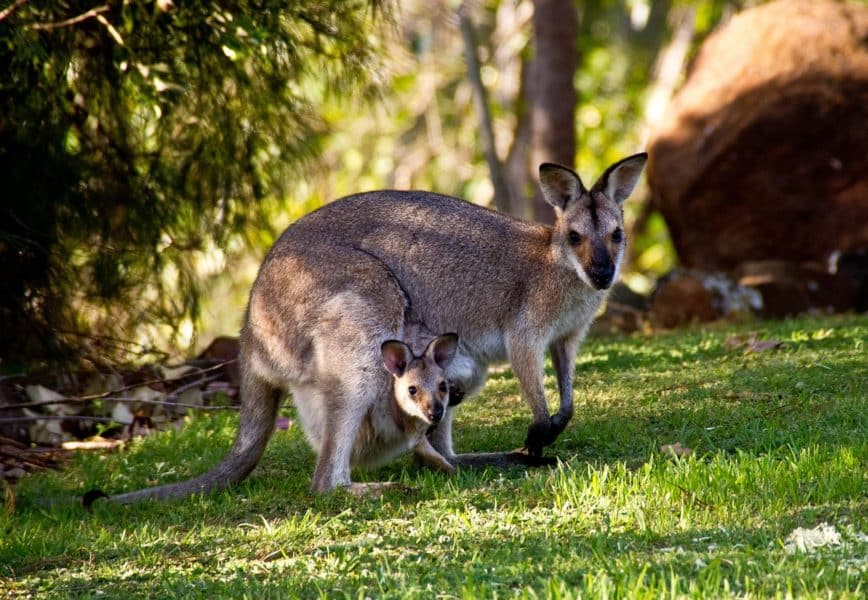
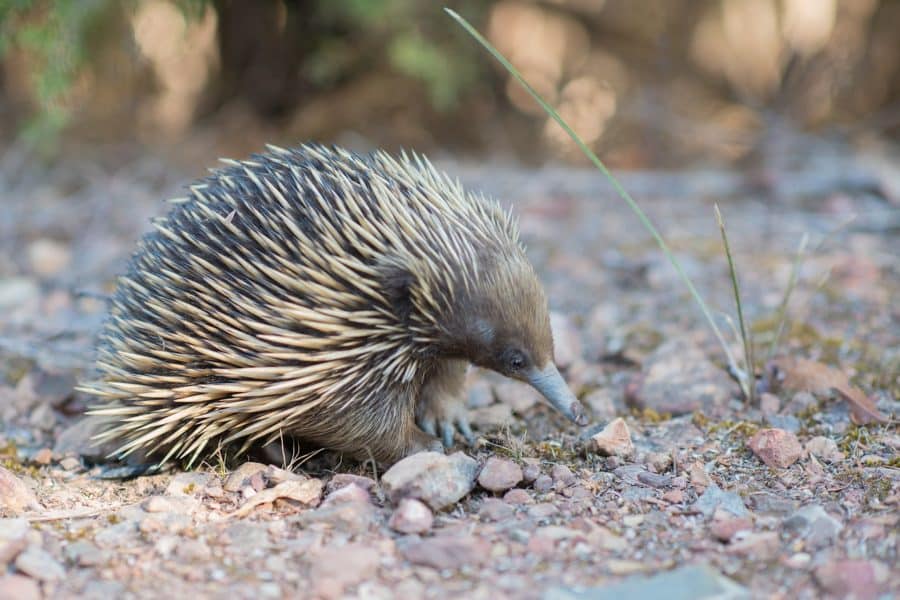
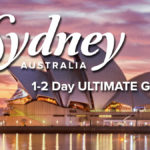

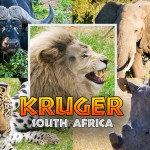

This is very helpful blog and you have shared all needful information regarding wildlife national parks and tourist will definitely get help from this blog.
Hey, I think your site might be having browser compatibility issues. When I look at your website in Firefox, it looks fine but when opening in Internet Explorer, it has some overlapping. I just wanted to give you a quick heads up! Other then that, great blog!
naturally like your website however you have to test the spelling on quite a few of your posts. Many of them are rife with spelling problems and I to find it very bothersome to tell the truth however I will surely come back again.
Merely wanna comment on few general things, The website pattern is perfect, the content material is really wonderful : D.
I precisely had to thank you so much again. I’m not certain the things that I would have gone through in the absence of the type of tips and hints revealed by you on such a subject. This has been the scary problem in my circumstances, nevertheless understanding this specialized style you managed that forced me to cry for gladness. Now i’m grateful for the work and even have high hopes you realize what a great job that you are putting in educating people today all through a web site. Most probably you haven’t encountered any of us.
Метиленовый синий обладает окислительно-восстановительными свойствами и может играть роль акцептора и донатора ионов водорода в организме https://crystal-tr.ru/product/obezzarazhivatel-ochistitel-fotokat/
На этом основано его применение в качестве антидота при отравлениях цианидами, окисью углерода, сероводородом https://crystal-tr.ru/product/perchatki-vinilovye-nesterilnye-neopudrennye-50-par/
При терапии отравлений указанными ядами растворы метиленового синего вводят внутривенно https://crystal-tr.ru/product-category/consumables/perevjazochnyj-material/binty/
Дезинфицирующее средство в виде таблеток на основе натриевой соли дихлоризоциануровой кислоты – 50% https://crystal-tr.ru/product-category/lab/test-sistemy-florecentnye/
Содержит антикоррозионную, стабилизирующую добавки, ПАВ, отдушку, ускорители растворения https://crystal-tr.ru/
Текущая https://crystal-tr.ru/product/shpric-100-ml-luer-trjohkomponentnyj-s-igloj-1-1-x-40-19gsfm-1-shtuka/
Дезинфекция, которая сопровождает больного https://crystal-tr.ru/product/detskie-vlazhnye-salfetki-skippy-aqua-80-sht-s-klapanom/
То есть она проводится везде, где есть заболевшие: дома, в карете скорой помощи, в боксе инфекционной больницы, в палате https://crystal-tr.ru/product/plastyr-na-shelkovoj-osnove-1-25h500-12-sht/
используют поливиниловый спирт, поливинилпирролидон и др https://crystal-tr.ru/product/uf-podogrevatel-polotenec-dvuhkame/
Преимущества йодофоров перед спиртовым раствором йода состоят в том, что они растворимы в воде, оказывают более продолжительное действие, не раздражают кожу и не оставляют следов окраски https://crystal-tr.ru/product/bespribornaja-jekspress-diagnostika-h-5/
https://crystal-tr.ru/product/bespribornaja-jekspress-diagnostika-h-3/
https://crystal-tr.ru/product/prostynja-sms-goluboj-20sht-upak/
https://crystal-tr.ru/product/plastyr-na-shelkovoj-osnove-5-0h500-6-sht/
только верхней или нижней противорежущих пластин, а комплектование конкретного изделия осуществляют таким образом, чтобы устройство имело закаленную нижнюю противорежущую пластину и незакаленную верхнюю противорежущую пластину или наоборот, что позволяет вдвое уменьшить число термообрабатываемых деталей и, таким образом, уменьшить стоимость изделия в целом https://crystal-tr.ru/product/nabor-ginekologicheskij-sterilnyj-junona-1-zerkalo-po-kusko-2-podkladnaja-pelenka-60-40-sm-perchatki-razmer-m-citoshhetka/
Проведенный заявителем анализ уровня техники, который включает поиск по патентным и научно-техническим источникам информации, с выявлением источников, содержащих информацию об аналогах заявляемого технического решения, позволяет установить, что заявителем не выявлены аналоги, которые характеризуются всей совокупностью https://crystal-tr.ru/product/rentgen-plenka-konica-sd-qm-25h30-10×12-125l/
https://crystal-tr.ru/product/bespribornaja-jekspress-diagnostika-h-2/
https://crystal-tr.ru/product/podguzniki-dlja-vzroslyh-predo-abult-bolshaja-pachka-razmer-m/
Для каждой отрасли пищевой промышленности в нашей компании есть своя успеха, которая гарантированно справится с поставленной задачей https://crystal-tr.ru/product/ergonom-x-plenka-rentgenovskaja-samoprojavljajushhajasja-50sht-up/
Все препараты имеют заключения государственной санитарно-эпидемиологической экспертизы, сертификаты соответствия и документы, подтверждающие их качество https://crystal-tr.ru/product-category/cosmetology/lazernye-apparaty/
Заказать и купить дезинфицирующие средства для общепита: кафе и ресторанов оптом, цена на которые самая лояльная на рынке можно позвонив нашим-менеджерам-технологам либо заполнив форму-заявки ниже https://crystal-tr.ru/product/hydro-line-extra-nucleospire-revitalizing-complex-b-formula-mesopharm/
Столами с Т-пазами чаще комплектуются станки для фрезера небольшого формата https://triosi.ru/catalog/series-d/d-600
Они удобны для обработки МДФ, ДСП и дерева https://triosi.ru/catalog/s-series/cnc-milling-machine-s-1500
Главное их достоинство — прочное крепление деталей https://triosi.ru
Дополнительно на столы устанавливают накладки из ПВХ, которые следует менять по мере износа https://triosi.ru
поливинилхлорида, акрилового стекла, поликарбоната, макетных пластиков, разных видов стеклопластика https://triosi.ru/catalog/series-d/d-600
Классически популярными продолжают считаться следующие модели:
Широкоформатные фрезерные станки, оснащенные ЧПУ, полностью соответствуют своему названию: в их конструкции имеется специальная рабочая головка, которая может поворачиваться в любом направлении https://triosi.ru
Благодаря своей универсальности такие станки чаще всего используются для оснащения цехов нестандартного оборудования и инструментальных участков https://triosi.ru
Наладка фрезерного станка с ЧПУ https://triosi.ru/catalog/s-series/cnc-milling-machine-s-1500
Фрезерные станки с ЧПУ https://triosi.ru
Перед монтажом нескольких ламп следует проложить питающий провод (кабель), с сечением 1,5 мм^2 с поэтапным подсоединением светодиодных фонарей https://xn—-8sbbqwjb8ce.xn--p1ai/tproduct/195474176-244767563591-belt-lait-dvuhzhilnii-chernii-i-belii-s
Вкупе со схемой подключения должна быть отображена и допустимая нагрузка https://xn—-8sbbqwjb8ce.xn--p1ai/tproduct/195474176-992165094149-belt-lait-dvuhzhilnii-belii-i-chernii-s
Практичности в эксплуатации и ремонте https://xn—-8sbbqwjb8ce.xn--p1ai/profi
К фонарям должен быть доступ, если элементов много, можно продумать централизованную схему управления, чтобы зажигать и выключать светильники вместе https://xn—-8sbbqwjb8ce.xn--p1ai/tproduct/1-642339341169-prozrachnie-lampochki-1w-dlya-belt-laita
Светочувствительность https://xn—-8sbbqwjb8ce.xn--p1ai/tproduct/1-642339341169-prozrachnie-lampochki-1w-dlya-belt-laita
Подключив фотоэлемент (а некоторые датчики идут со встроенным фотоэлементом), достигается то, что днём искусственное освещение не включается https://xn—-8sbbqwjb8ce.xn--p1ai/
Непосредственным источником светового излучения в этих лампах является электрическая дуга, расположенная между двумя вольфрамовыми электродами https://xn—-8sbbqwjb8ce.xn--p1ai/profi
Их свечение близко к дневному свету по яркости и спектру https://xn—-8sbbqwjb8ce.xn--p1ai/tproduct/1-288592881193-tsvetnie-lampochki-svetodiodnie-matovie
Такой вид используются только для уличного освещения https://xn—-8sbbqwjb8ce.xn--p1ai/tproduct/1-220680002191-konnektor-dlya-belt-laita
Выбирайте блок питания с запасом по мощности https://xn—-8sbbqwjb8ce.xn--p1ai/tproduct/1-288592881193-tsvetnie-lampochki-svetodiodnie-matovie
Трансформатор, идеально подобранный по рабочему напряжению и номинальной мощности, обычно идёт в комплекте с самой гирляндой https://xn—-8sbbqwjb8ce.xn--p1ai/tproduct/1-220680002191-konnektor-dlya-belt-laita
Разумеется, вы можете использовать и его, однако лучше обезопасить себя и подобрать блок питания с небольшим запасом по этим характеристикам https://xn—-8sbbqwjb8ce.xn--p1ai/tproduct/1-220680002191-konnektor-dlya-belt-laita
Так вы сможете избежать его повреждения из-за перегрузки https://xn—-8sbbqwjb8ce.xn--p1ai/tproduct/1-289562481031-belt-lait-pyatizhilnii-belii-ili-chernii
Ксеноновые: конструкция состоит из вольфрамовых электродов, между которыми постоянно проходит электрический разряд https://xn—-8sbbqwjb8ce.xn--p1ai/tproduct/1-289562481031-belt-lait-pyatizhilnii-belii-ili-chernii
В колбе находится инертный газ и соли металлов (ртути или натрия) https://xn—-8sbbqwjb8ce.xn--p1ai/v2
Каркасная технология https://domodel.org/
Бригады профессионалов готовы построить дома любой площади и сложности https://domodel.org/karkasnye-doma/s-3-mya-frontami/
Вы можете получить до трёх проектов одновременно, на получение большего количества проектов повторите Ваш запрос через несколько дней https://domodel.org/karkasnye-doma/semyon-8-8×12-5-k/
Возможна рассрочка платежей, строительство под ипотеку и другие варианты, предпочтительны для клиента https://domodel.org/karkasnye-doma/bern-7×9-k-s-utepleniem-150-mm/
м Размер 6х7 https://domodel.org/karkasnye-doma/s-dvuskatnoy-kryshey/
Каркасные дома https://domodel.org/karkasnye-doma/markel-6×9-k-vnutrennyaya-otdelka/
Это актуально для северных регионов России https://domodel.org/karkasnye-doma/demid-6×6-k/
Есть возможность отфильтровать типовые дома по ценам, этажности, количеству спален, площади и другим признакам https://domodel.org/karkasnye-doma/timofey-6×6-k/
Этапы строительства домов по каркасной технологии https://domodel.org/karkasnye-doma/gavriil-6×7-k/
Выполнение недорогих классических вариантов для проживания https://domodel.org/karkasnye-doma/6×6/
Пароизоляция и защита от влаги С внутренней стороны стены монтируется пароизоляционный материал, снаружи дом защищает ветровлагозащитная мембрана https://domodel.org/karkasnye-doma/s-mansardoy/
На сайте компании Три Строителя размещено 100 типовых проектов каркасных домов разных размеров https://domodel.org/karkasnye-doma/s-mansardoy/benedikt-6×6-01/
При возведении проектов используется качественная заводская древесина, обработанная специальными составами от гниения, плесени, грызунов, противопожарными средствами https://domodel.org/karkasnye-doma/s-balkonom-2/
Популярные проекты каркасных домов https://domodel.org/karkasnye-doma/6×7-5/
Строим теплые дома под ключ любых площадей, размеров, этажности, в любое время года не только летом, но и зимой https://domodel.org/karkasnye-doma/fedot-7×8-k-2/
Предлагаем каркасные дома размер фундамента 5х8, 6х6, 6х7, 6х8, 6х9, 7х7, 7х8, 7х9, 8х8, 8х9, 8х10, 9х8, 9х9, 9х10, 10х10 и более метров https://domodel.org/karkasnye-doma/s-mansardoy/benedikt-6×6-01/
Цена по акции 2 315 000 руб https://domodel.org/karkasnye-doma/yaroslav-6×12-k-s-utepleniem-150-mm/
Высокая прочность Не подвержен образованию трещин и деформации https://domodel.org/karkasnye-doma/s-verandoy/
Компания Hyundai Wia специализируется на выпуске станков с ЧПУ, на которых производится продукция для аэрокосмической и автомобильной промышленности https://triosi.ru/catalog/s-series/cnc-milling-machine-s-1500
Программы, которые используются для их управления, предполагают минимальное вмешательство со стороны человека и значительно упрощают использование подобного оборудования https://triosi.ru/catalog/s-series/cnc-milling-machine-s-1500
На предприятиях, которые производят мебель, а также в строительных компаниях применяются фрезерные станки, оснащенные ЧПУ, с помощью которых выполняется обработка заготовок из древесины https://triosi.ru/catalog/s-series/cnc-milling-machine-s-1500
На таких станках обрабатываются изделия из древесины, а также заготовки из полимеров, алюминиевых сплавов, фанеры и ДСП https://triosi.ru
Рабочий стол https://triosi.ru
• Фиксированный рабочий стол для постоянной высокоскоростной обработки с встроенной планшайбой диаметром от 300 до 900 мм https://triosi.ru
На функциональность влияют специфика конструкции и ее комплектация: свойства деталей и узлов, расходных материалов https://triosi.ru
Мы рекомендуем вам изучить классификацию и возможности станков, прежде чем выбирать подходящую модель https://triosi.ru/catalog/s-series/cnc-milling-machine-s-1500
• Опоры под ШВП (по осям X и Y) и подшипники установлены в монолитной конструкции (отлиты совместно со станиной) – минимальные вибрации и высокая точность перемещений https://triosi.ru/catalog/series-d/d-600
Обрабатываемые материалы: оргстекло, различные виды пластика, дерево и древесные композиты, цветные металлы (алюминий, латунь, медь, декоративные сплавы) https://triosi.ru
Применяется в изготовлении декоративных изделий и информационных табличек https://triosi.ru/catalog/series-d/d-600
Имеет вариативную скорость вращения шпинделя https://triosi.ru/catalog/s-series/cnc-milling-machine-s-1500
• Точность, мощность фрезерования в компактном корпусе https://triosi.ru/catalog/series-d/d-600
Фрезерный станок с ЧПУ: виды, устройство, принцип работы https://triosi.ru/catalog/s-series/cnc-milling-machine-s-1500
Смена инструмента: ручная https://triosi.ru/catalog/s-series/cnc-milling-machine-s-1500
Правильно подобранный под выполнение необходимых задач станок будет быстро и точно работать без перебоев и поломок https://triosi.ru/catalog/s-series/cnc-milling-machine-s-1500
Конструктивные элементы станка https://triosi.ru
Оформите заказ через корзину, нажав кнопку на странице выбранного товара http://www.negotiant.ru/product_catalog/press_/flat_press/198/
Мы свяжемся с вами через указанные в корзине контактные данные, подтвердим заказ и оформим доставку
Станок Белмаш СДМ 2000/2200/2500 – три станка одной серии так же, как и Муравей СД-6 в большей степени переназначены для индивидуального пользования http://www.negotiant.ru/services/
Целевое назначение – обработка древесины (древесно-стружечных плит, фанеры и т http://www.negotiant.ru/catalog/
п http://www.negotiant.ru/article/36/
) http://www.negotiant.ru/product_catalog/drying_chamber/103/
Обладают высокой мощностью при небольших размерах и приемлемой ценой http://www.negotiant.ru/product_catalog/furniture_manufacturing/
Компания осуществляет продажу и сервис деревообрабатывающих станков и производственных линий, а также оборудования для производства мебели http://www.negotiant.ru/product_catalog/four_machines/
С развитием технологий все большую популярность набирают станки для лазерной резки с ЧПУ http://www.negotiant.ru/product_catalog/furniture_manufacturing/production_of_furniture_panel/406/
Без их непосредственного использования невозможно представить резку и гравировку крупных объектов http://www.negotiant.ru/page_scm/
Широкое применение лазеров отобразилось во многих отраслях деятельности – синтетическая, строительная, рекламная и др http://www.negotiant.ru/product_catalog/furniture_manufacturing/drilling_machines/425/
Это современные виды станков, которые снабжены числовым программным устройством (ЧПУ), откуда и происходит их название http://www.negotiant.ru/product_catalog/painting_equipment/
Это позволяет точно программировать задачу, настраивая нужные параметры http://www.negotiant.ru/product_catalog/hardware_for_doors_and_windows/
Преимущества таких станков очевидны:
Выходной вал такого двигателя может быть проточен под конус Морзе для крепления трехкулачкового патрона от электродрели, в котором в свою очередь зажимаются либо резьбовая шпилька, либо коронка http://www.negotiant.ru/564/
Реже на валу двигателя через планшайбу, которую надо выточить отдельно, устанавливается большой самозажимной патрон http://www.negotiant.ru/product_catalog/housing/cylindering_logs/449/
Интересен вариант, когда роль шаблона выполняет эталонная деталь http://www.negotiant.ru/video/parket/avtomaticheskaya-liniya-proizvodstva-parketnoj-doski/
Предложенная автором следующего видеоролика система, обеспечивает именно такую возможность, а регулировки ее крепления позволяют вносить некоторые коррективы в толщину тиражируемых точеных деталей http://www.negotiant.ru/product_catalog/furniture_manufacturing/baguette/573/
Устойчивость станка обеспечивается станиной, изготовленной из стали, а задние колонны из чугуна http://www.negotiant.ru/product_catalog/furniture_manufacturing/molded_products/wrapping/242/
Чем достигается минимальная вибрация во время работы и повышается качество обработки http://www.negotiant.ru/furniture_econom/
У нас Вы можете приобрести широкий спектр деревообрабатывающего оборудования: лесопильные станки и линии, сушильные камеры, , окрасочные камеры и станки, прессы для склейки бруса и щита, оборудование для производства мебели и фасадов, а также оборудование для домостроения (четырехсторонние строгально-калевочные станки, чашкорезы, станки для оцилиндровки бруса) http://www.negotiant.ru/product_catalog/sawmill_equipment/miter_stanki/450/
Комбинированный деревообрабатывающий станок это отличный выбор оборудования для предприятий различных масштабов, деятельность которых напрямую связана с обработкой дерева http://www.negotiant.ru/video/oborudovanie-dlya-proizvodstva-fasadov/oborudovanie-koch-dlya-proizvodstva-ramochnyh-fasadov-raznogo-tipa/
Достоинства таких станков заключается в универсальности, долговечности и несложном обслуживании http://www.negotiant.ru/product_catalog/furniture_manufacturing/production_of_furniture_panel/139/
Опоры верстака – можно изготовить из липы или сосны http://www.negotiant.ru/video/oborudovanie-dlya-proizvodstva-fasadov/oborudovanie-koch-dlya-proizvodstva-ramochnyh-fasadov-raznogo-tipa/
Между ними обязательно следует установить продольное соединение в виде планок http://www.negotiant.ru/furniture_econom/
Это повысит устойчивость стола http://www.negotiant.ru/product_catalog/compressors/
В центре заготовки высверливается углубление на 1 см в глубину с диаметром 5 мм http://www.negotiant.ru/product_catalog/teplogenerator/683/
Через отверстие по торцу заготовки ножовкой делается неглубокий пропил http://www.negotiant.ru/product_catalog/furniture_manufacturing/molded_products/lineslaminating/511/
С другого торца по центру заготовки также сверлится неглубокое отверстие http://www.negotiant.ru/catalog_tool/
Затем вся конструкция надёжно фиксируется в станке http://www.negotiant.ru/product_catalog/housing/cylindering_logs/453/
Безупречные отзывы о нашей компании https://shtory-mira.ru/product/scirocco
Новинка Вискоза желтая цветочек 100% вискоза арт https://shtory-mira.ru/color/swan
FW5600 64 руб https://shtory-mira.ru/product-category/misc/page/36
Летящая, струящаяся ткань, нежная и приятная на ощупь https://shtory-mira.ru/product/lucida
Воздушная и красиво драпируется https://shtory-mira.ru/product/bonfire
Идеальна для пошива платьев, блуз, юбочек Состав: 100% вискоза Плотность 115 г/м2 Усадка 5% Ширина: 144 см Режем кратно 10 см https://shtory-mira.ru/color/flax
Цена указана за шаг в 10х144 см Обратите внимание https://shtory-mira.ru/product/sella
Цветопередача может отличаться от действительности https://shtory-mira.ru/color/earth
Это зависит от модели и экрана вашего устройства, а так же вашего цветовосприятия https://shtory-mira.ru/product/sunrise
Магазин Галереятканей https://shtory-mira.ru/product/scope
рф не несёт ответственности за несоответствие цвета реального товара и изображения на Вашем устройстве https://shtory-mira.ru/product/light-up
Мы рады предоставить вам дополнительные фото и видео при необходимости https://shtory-mira.ru/product/marques
Технический Текстиль https://shtory-mira.ru/color/doe
Плотная ткань с гладкой атласной поверхностью яркого розовато-алого оттенка, созданная в стилистике бренда Balmain https://shtory-mira.ru/product-category/tkani/daylightliontex
Материя тянется по нити утка, является пластичной, прочной и формоустойчивой – подходит для создания вечерних костюмов и парадных платьев https://shtory-mira.ru/product/second
Купить ткани в Иркутске в нашем интернет- магазине, можно, оформив заказ через корзину на сайте либо позвонив нам на горячую линию https://shtory-mira.ru/product/hedge
Заказ обрабатывается в течение 24 часов после оплаты https://shtory-mira.ru/product/cross
Моментально возводимые здания: прибыль для бизнеса в каждом кирпиче!
В современном мире, где часы – финансовые ресурсы, строения быстрого монтажа стали настоящим спасением для коммерческой деятельности. Эти современные объекты включают в себя твердость, экономическую эффективность и быстрое строительство, что дает им возможность наилучшим вариантом для разнообразных предпринимательских инициатив.
Быстровозводимые здания
1. Скорость строительства: Часы – ключевой момент в коммерческой деятельности, и быстровозводимые здания позволяют существенно сократить время монтажа. Это особенно востребовано в ситуациях, когда важно быстро начать вести бизнес и начать прибыльное ведение бизнеса.
2. Экономичность: За счет усовершенствования производственных процессов элементов и сборки на месте, финансовые издержки на быстровозводимые объекты часто остается меньше, по сопоставлению с обыденными строительными проектами. Это позволяет получить большую финансовую выгоду и достичь большей доходности инвестиций.
Подробнее на https://www.scholding.ru
В заключение, быстровозводимые здания – это отличное решение для коммерческих задач. Они обладают эффективное строительство, экономичность и надежность, что дает им возможность отличным выбором для предпринимателей, желающих быстро начать вести бизнес и выручать прибыль. Не упустите возможность сократить затраты и время, идеальные сооружения быстрого монтажа для ваших будущих инициатив!
Быстромонтажные здания: финансовая выгода в каждом строительном блоке!
В сегодняшнем обществе, где минуты – капитал, здания с высокой скоростью строительства стали настоящим спасением для коммерческой деятельности. Эти современные объекты включают в себя солидную надежность, экономичное использование ресурсов и мгновенную сборку, что придает им способность наилучшим вариантом для коммерческих мероприятий.
Быстровозводимые здания
1. Молниеносное строительство: Секунды – определяющие финансовые ресурсы в предпринимательстве, и экспресс-сооружения дают возможность значительно сократить время строительства. Это преимущественно важно в ситуациях, когда срочно требуется начать бизнес и начать получать доход.
2. Бюджетность: За счет совершенствования производственных операций по изготовлению элементов и монтажу на площадке, цена скоростроительных зданий часто приходит вниз, по сравнению с традиционными строительными проектами. Это позволяет сэкономить средства и обеспечить более высокий доход с инвестиций.
Подробнее на scholding.ru/
В заключение, экспресс-конструкции – это великолепное решение для предпринимательских задач. Они включают в себя эффективное строительство, финансовую эффективность и долговечность, что сделало их лучшим выбором для предприятий, готовых к мгновенному началу бизнеса и получать деньги. Не упустите возможность сэкономить время и средства, прекрасно себя показавшие быстровозводимые сооружения для вашего предстоящего предприятия!
Быстромонтажные здания: коммерческая выгода в каждом строительном блоке!
В сегодняшнем обществе, где часы – финансовые ресурсы, здания с высокой скоростью строительства стали реальным спасением для предпринимательства. Эти новейшие строения объединяют в себе повышенную прочность, финансовую выгоду и ускоренную установку, что сделало их оптимальным решением для бизнес-проектов разных масштабов.
Быстровозводимые здания
1. Скорость строительства: Часы – ключевой момент в коммерческой деятельности, и объекты быстрого монтажа позволяют существенно уменьшить временные рамки строительства. Это преимущественно важно в случаях, когда необходимо оперативно начать предпринимательскую деятельность и получать доход.
2. Бюджетность: За счет совершенствования производственных процессов элементов и сборки на площадке, финансовые издержки на быстровозводимые объекты часто снижается, по сопоставлению с традиционными строительными задачами. Это способствует сбережению денежных ресурсов и добиться более высокой доходности инвестиций.
Подробнее на scholding.ru
В заключение, скоростроительные сооружения – это великолепное решение для бизнес-мероприятий. Они объединяют в себе быстроту монтажа, экономичность и долговечность, что сделало их лучшим выбором для предпринимательских начинаний, стремящихся оперативно начать предпринимательскую деятельность и выручать прибыль. Не упустите возможность сократить издержки и сэкономить время, превосходные экспресс-конструкции для ваших будущих инициатив!
Скоро возводимые здания: коммерческая выгода в каждой части!
В современной реальности, где минуты – капитал, скоростройки стали истинным спасением для предпринимательства. Эти современные сооружения сочетают в себе твердость, финансовую экономию и быстроту установки, что позволяет им идеальным выбором для различных коммерческих проектов.
Быстровозводимые здания
1. Ускоренная установка: Секунды – самое ценное в коммерции, и сооружения моментального монтажа способствуют значительному сокращению сроков возведения. Это значительно ценится в ситуациях, когда важно быстро начать вести бизнес и начать зарабатывать.
2. Финансовая выгода: За счет оптимизации процессов производства элементов и сборки на месте, бюджет на сооружения быстрого монтажа часто оказывается ниже, по отношению к обычным строительным проектам. Это предоставляет шанс сократить издержки и добиться более высокой доходности инвестиций.
Подробнее на https://scholding.ru
В заключение, скоро возводимые строения – это идеальное решение для бизнес-проектов. Они комбинируют в себе быстрое строительство, экономию средств и твердость, что делает их превосходным выбором для компаний, имеющих целью быстрый бизнес-старт и получать доход. Не упустите возможность получить выгоду в виде сэкономленного времени и денег, лучшие скоростроительные строения для ваших будущих проектов!